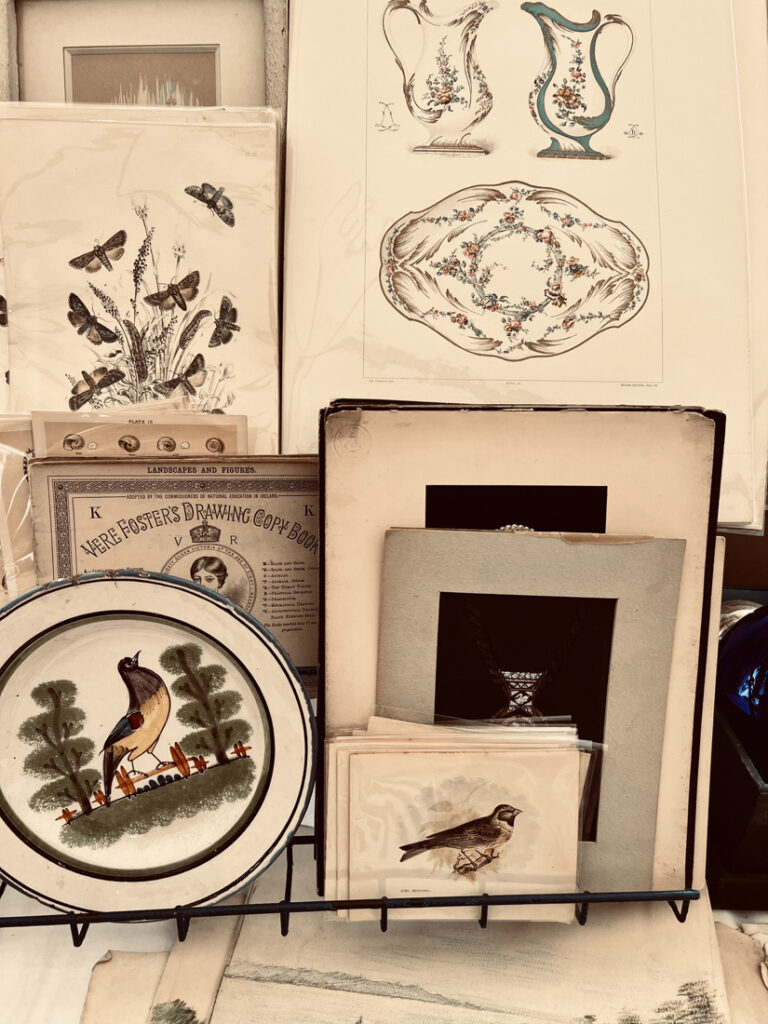
09/09/2021 Author: admin
Royal Academy of Arts. 29 January — 17 April 2022
“Explore Francis Bacon’s profound and moving paintings, where the line between human and animal is constantly blurred, reminding us that our primal instincts lie just below the surface.”
‘Francis Bacon: Man and Beast’ is an exhibition for now…One of the most eagerly awaited shows’
Financial Times
This exhibition is the first of Francis Bacon in London in more than 10 years. It includes rarely loaned paintings from private collections. It spans Bacon’s 50 years career showing early works and his last ever painting.
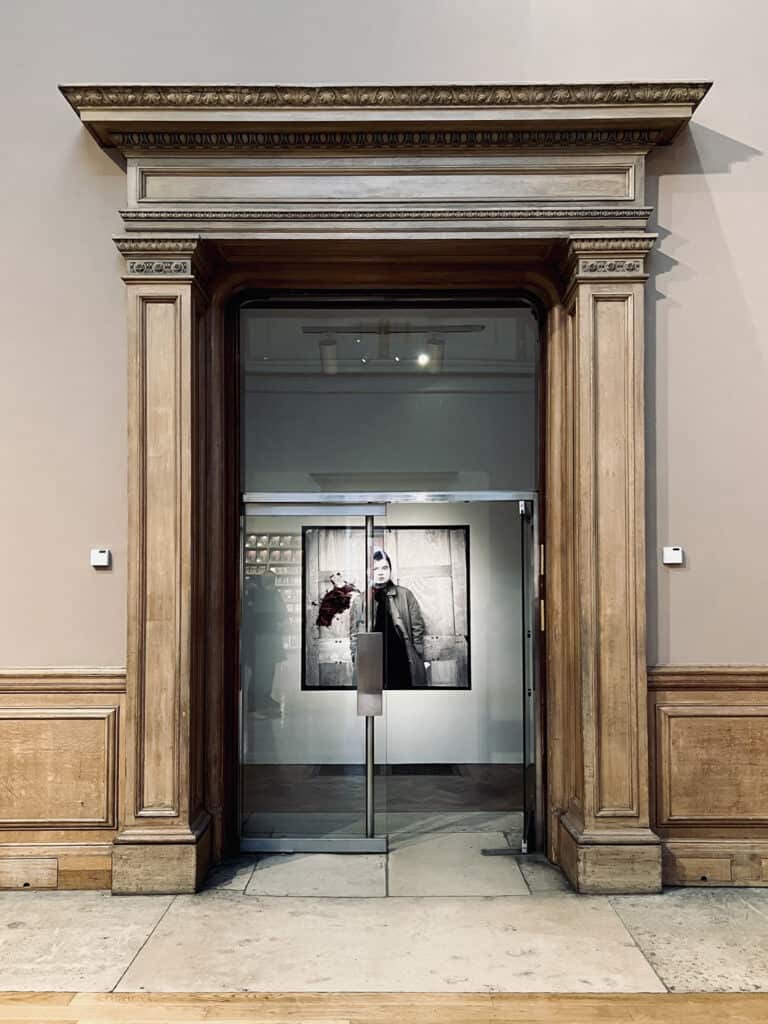
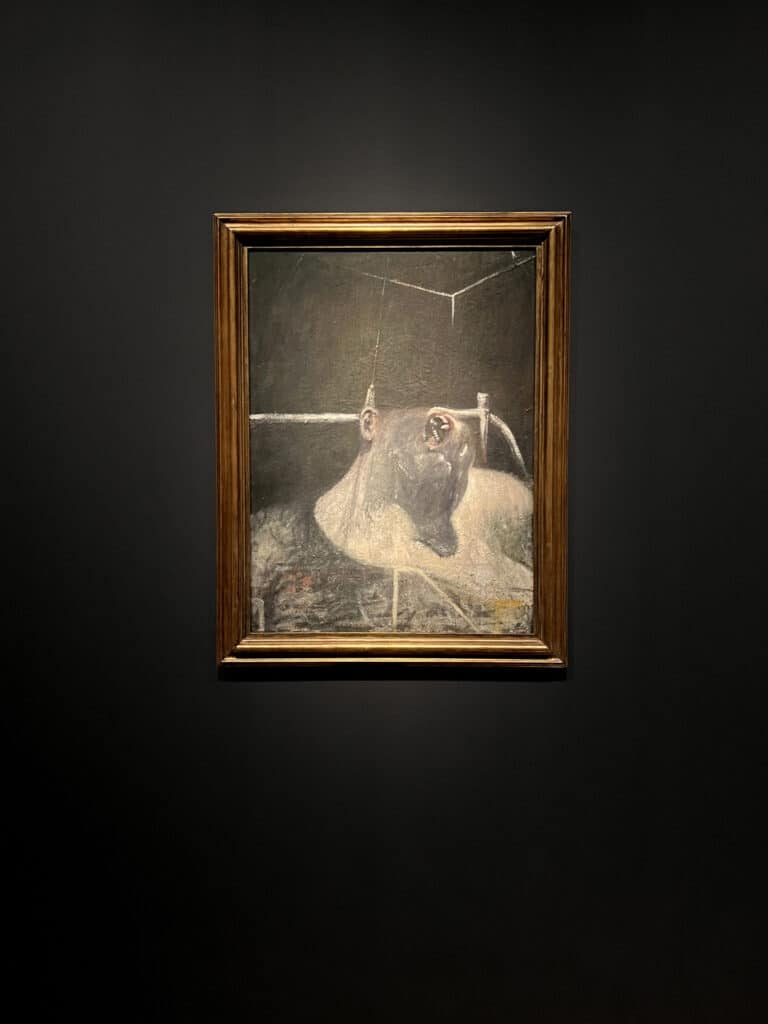
These paintings seen together show the expressions of visual panic, which can leave you the viewer with a deep feeling of anxiousness. What is so striking about Bacons paintings, particularly the monumental triptychs is how each canvas is “designed with precision”. His figures are carefully balanced and contained, isolated within geometric shapes. Bacon has incredible powers of composition almost classical in his symmetry, this adds to the sense of confinement of the human and animal figures almost protecting the viewer from Bacon’s often violent and tragic imagery.
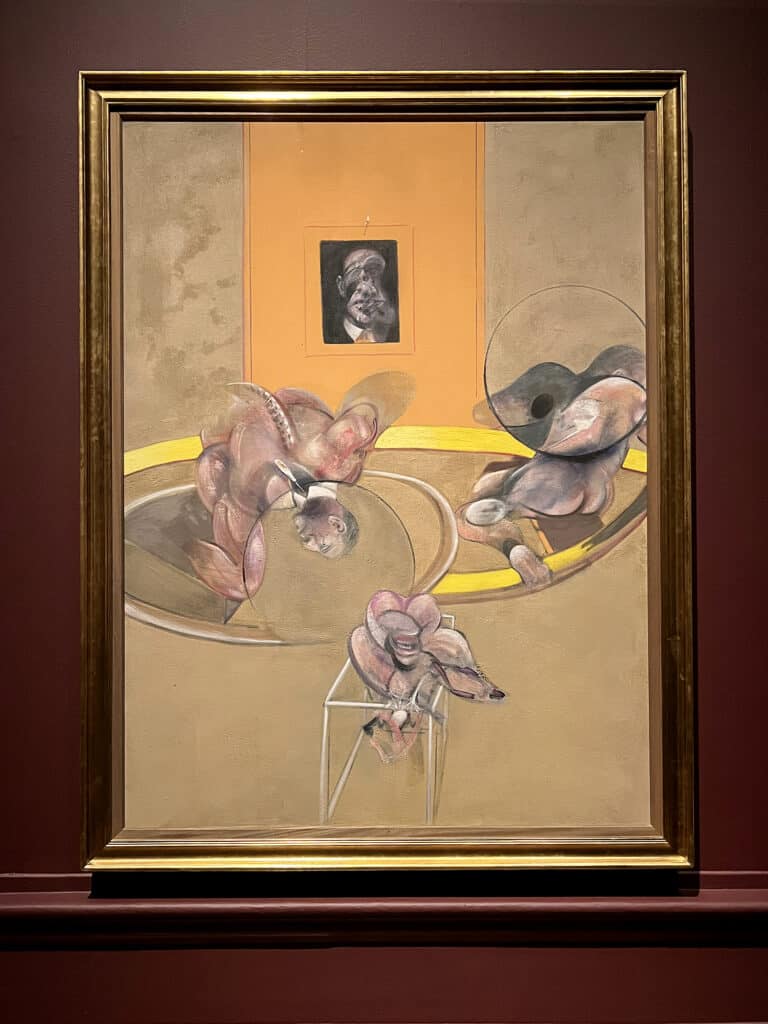
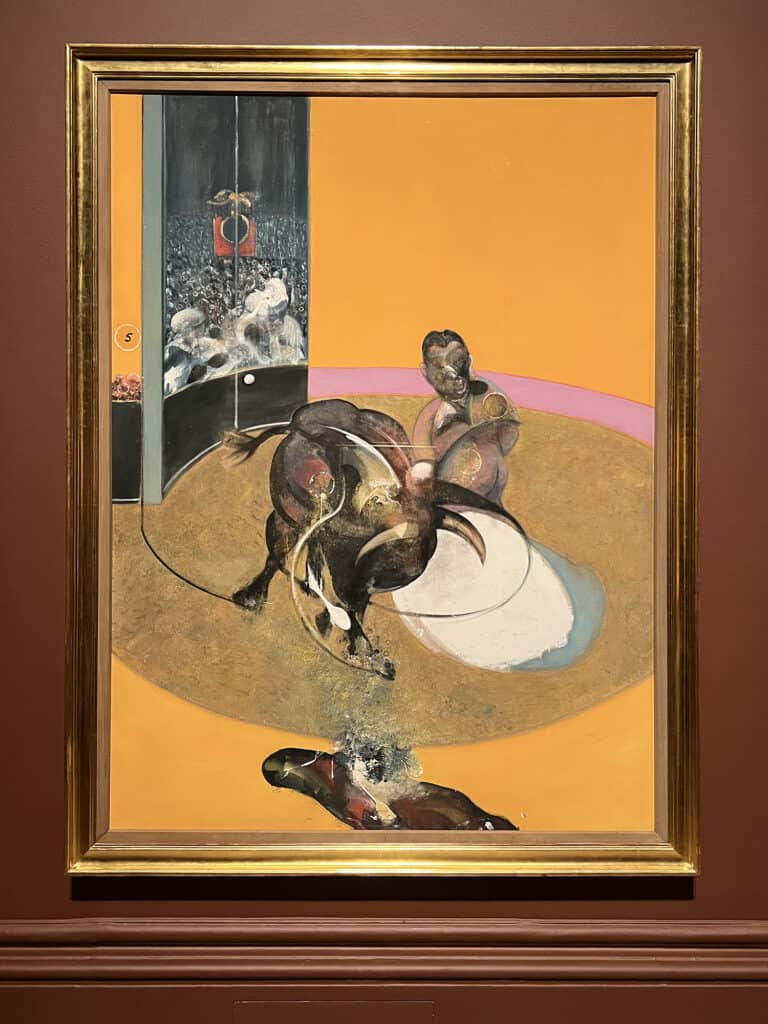
The Bullfighting paintings display extreme erotic movements between the bullfighter and the bull. After a long drawn out “parade” the bull literally begs to be killed. Then dragged helplessly around the dusty arena, large swirls of blood mark the sand. Bacon’s laden brush echos this grand final death throw, swishing across an unprimed canvas. Large areas of bright orange reflect the intense heat of the sun and emphasising the vibrant colours of the bullfighting ring.
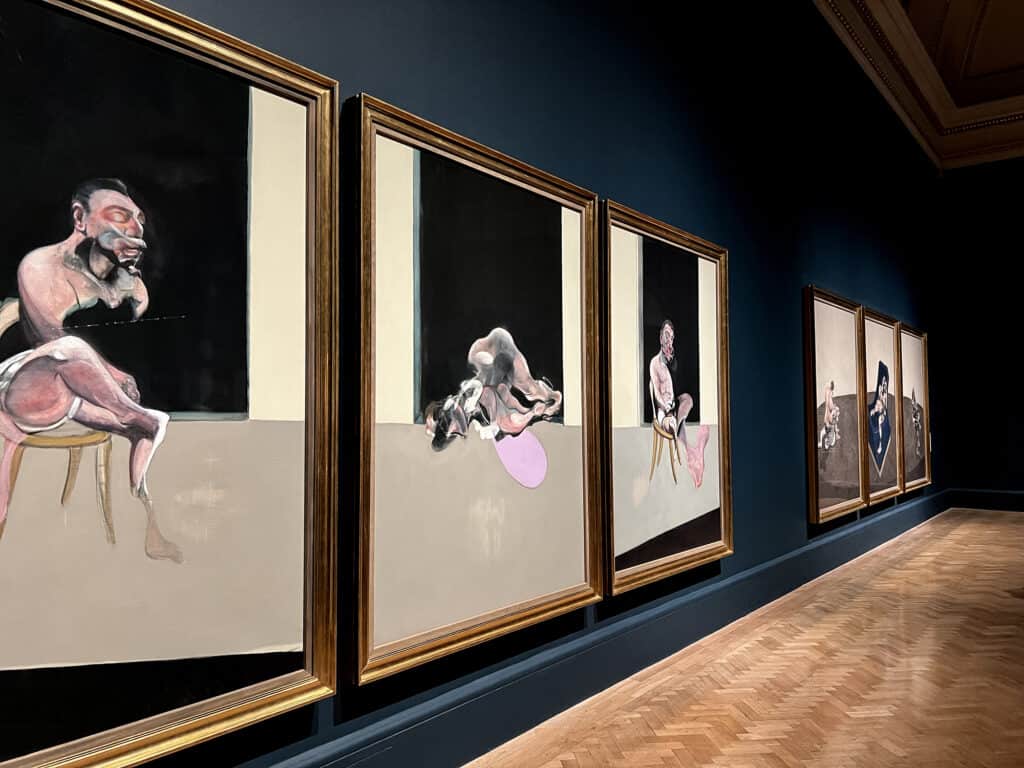
Triptych August, 1972 – The Black Triptychs
Sometimes called The Black Triptych due to the death of George Dyer Bacon’s principle lover for seven years. Bacon in mourning was well aware of the tenuous link between life and death and painted Dyer many times. In its display caption for the Triptych–August 1972 the Tate gallery wrote, “What death has not already consumed seeps incontinently out of the figures as their shadows.”
Triptych said to be his his finest work and definitely one of our favourites.
https://www.royalacademy.org.uk/exhibition/francis-bacon
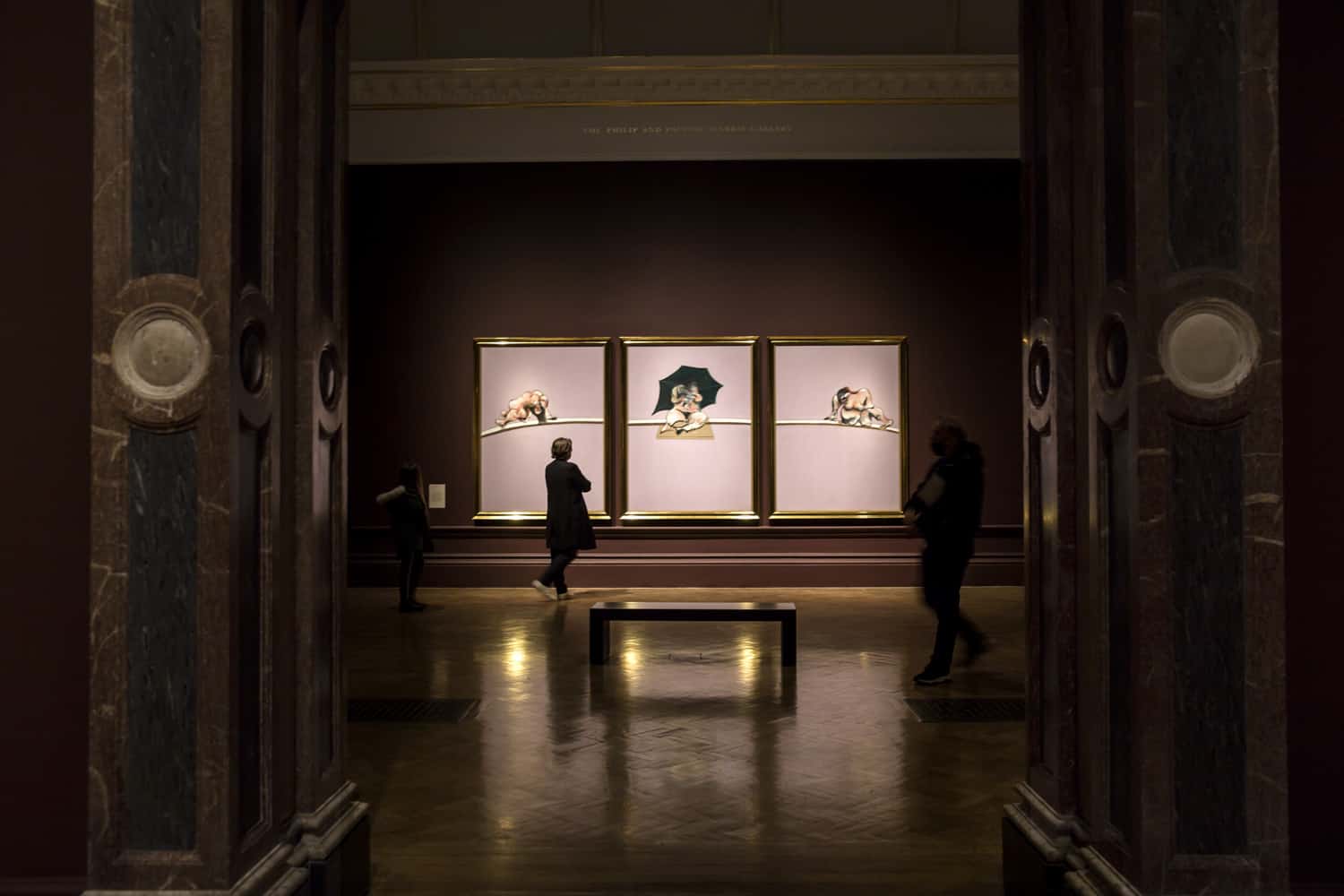
Trpitych – Study of the Human Body, 1970
Opening Photographic image: Triptych Inspired by the Oresteia of Aeschylus, 1981 and Second Version of Triptych 1944, 1988.
